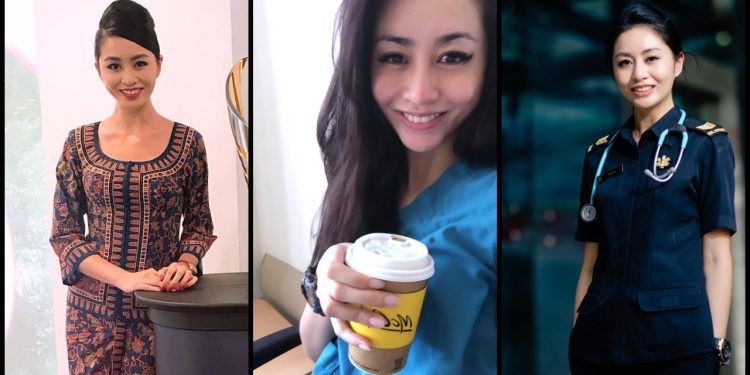When Ann Sim does her rounds at Khoo Teck Puat Hospital (KTPH) as a staff nurse, she keeps her grandfather’s advice close to heart.
“When you help someone, you save his or her world,” he used to say. He has since passed on, but his words continue to help shape Ann’s outlook on life.
Just three months ago, the 32-year-old was travelling the world as a flight stewardess with SIA. Germany, France, USA – name the country, she would have most likely been there.
And when she was not travelling the world, she volunteered with the SCDF as an emergency paramedic.
The COVID-19 situation changed that.
Most flights have been grounded, impacting Ann’s livelihood as a stewardess.
“As stewardesses, our main source of income comes from the allowance we draw from our flights. Since most of the flights have been put on hold, the dip in salary was inevitable,” she said.
SCDF also temporarily pulled the plug on its volunteer programme.
Yet Ann, who has a nursing diploma from Nanyang Polytechnic, still wanted to give back to society. She had the heart to help and the skills to make a difference.
“I asked myself how I could better contribute to my company and country. Since my nursing certificate was still valid, I decided to send out my resume for the position of staff nurse to job agencies. Meanwhile, I applied for the waiver of exclusive service [from SIA],” she said.
Life as a Nurse
Ann landed a job in KTPH, working in a C class medical renal unit.
She is thankful to both SIA and KTPH for giving her the chance to make a difference.
A typical morning shift starts with a briefing, where nurses get a status update on the patients under their care.
Ann will then serve the patients their breakfast, having to feed those who have trouble eating on their own.
Showering and changing diapers would be next on her to-do list.
When the doctors start doing their rounds, Ann and her team of nurses will assist with writing up the reports, drawing of blood-samples and monitoring patients’ vital signs.
She then updates the patients’ families on their loved ones’ condition and assists to discharge those who are well enough to go home.
Anticipating the needs of those under her care is one similarity between being a stewardess and a nurse, said Ann.
She added that the most rewarding part of her role as a nurse is when she sees her patients regain their health and quality of life.
“I had this patient who was bedbound and severely dehydrated. Under the treatment of the team, she was able to gradually come around, acknowledge our presence by nodding and even speak a little. Slowly, with the help of the dietitian and speech therapist, we were able to feed her the appropriate amount of nutrition. Soon after, with the help of the physiotherapist, she managed to walk. That is the progress all medical staff would love to see for their patients,” said Ann.
Hoping for a Recovery
SIA had also recently redeployed 800 of its cabin crew staff as care ambassadors at hospitals and transport ambassadors at hubs where they put their communications and service skills to use.
Like them, Ann is still on standby for SIA and will put on the iconic sarong kebaya when called upon.
On her hopes for the aviation industry and her colleagues, Ann said: “I hope the industry recovers soon. I am so proud of my colleagues who have stepped forward during this time to give support to the different departments. Especially those who are following-up on calls for passengers’ requests at the call centre, the social distancing ambassadors [who are ensuring the public wear masks and keep a good distance from one another], and the care ambassadors in the hospitals, taking care of patients.”

